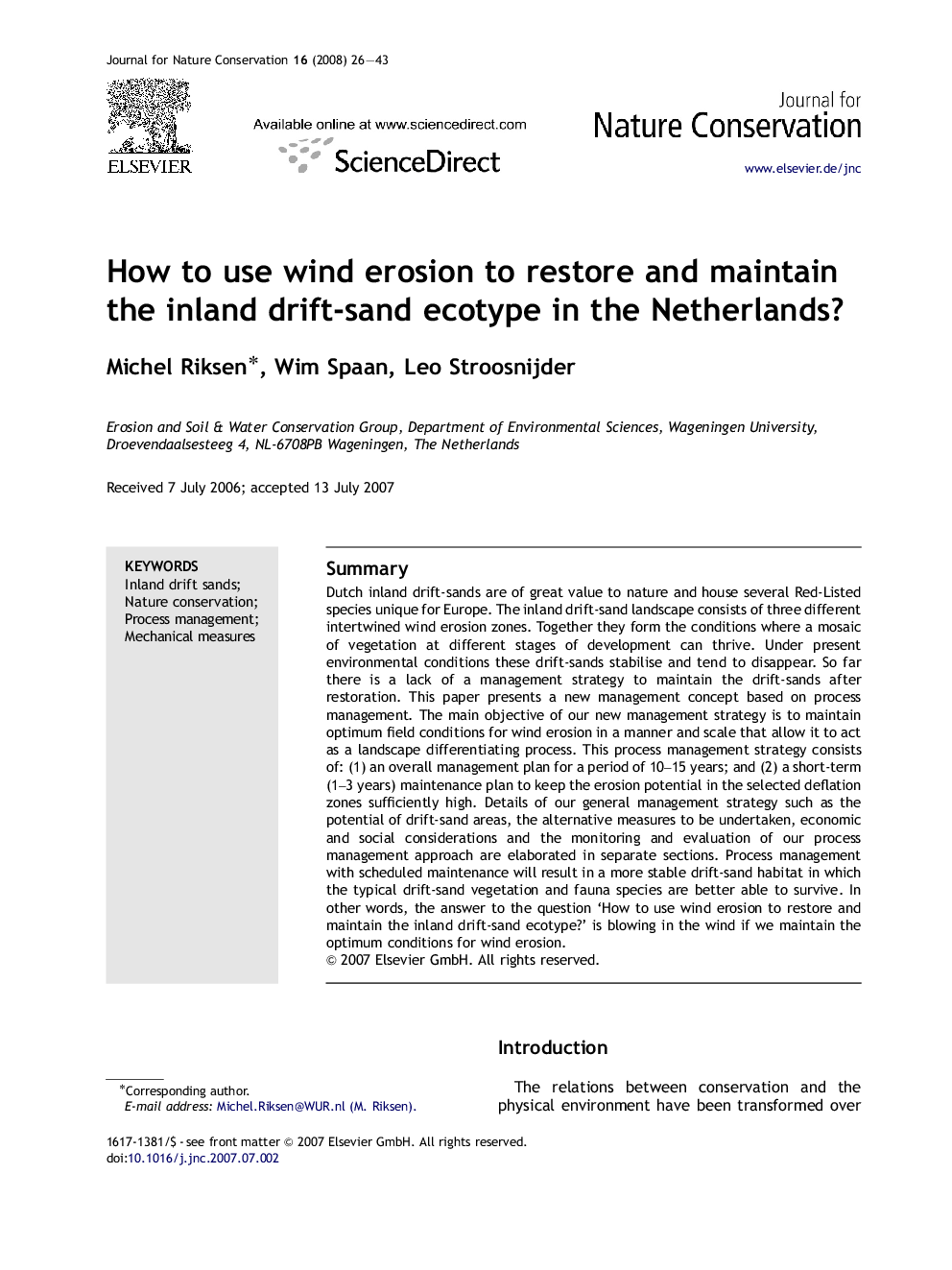| Article ID | Journal | Published Year | Pages | File Type |
|---|---|---|---|---|
| 4400109 | Journal for Nature Conservation | 2008 | 18 Pages |
SummaryDutch inland drift-sands are of great value to nature and house several Red-Listed species unique for Europe. The inland drift-sand landscape consists of three different intertwined wind erosion zones. Together they form the conditions where a mosaic of vegetation at different stages of development can thrive. Under present environmental conditions these drift-sands stabilise and tend to disappear. So far there is a lack of a management strategy to maintain the drift-sands after restoration. This paper presents a new management concept based on process management. The main objective of our new management strategy is to maintain optimum field conditions for wind erosion in a manner and scale that allow it to act as a landscape differentiating process. This process management strategy consists of: (1) an overall management plan for a period of 10–15 years; and (2) a short-term (1–3 years) maintenance plan to keep the erosion potential in the selected deflation zones sufficiently high. Details of our general management strategy such as the potential of drift-sand areas, the alternative measures to be undertaken, economic and social considerations and the monitoring and evaluation of our process management approach are elaborated in separate sections. Process management with scheduled maintenance will result in a more stable drift-sand habitat in which the typical drift-sand vegetation and fauna species are better able to survive. In other words, the answer to the question ‘How to use wind erosion to restore and maintain the inland drift-sand ecotype?’ is blowing in the wind if we maintain the optimum conditions for wind erosion.
